Complete Unboxing Review of the MoErgo Glove80 – Enthusiast Edition (English Translation)
Context: When a brown cardboard box says more than what’s printed on it
The box that lands on the table here is the opposite of everything you find on gaming shelves. No renderings, no exploded diagrams, no slogans in 120-point font. Just brown corrugated cardboard, some packing tape, and a “Fragile” sticker. For most people this would be the dullest moment of the entire unboxing – for enthusiasts, it’s the opposite. This is where MoErgo’s philosophy behind the Glove80 becomes obvious: it’s not about shelf appeal, it’s about a tool.
In the enthusiast scene you’ll often hear: “The best keyboard is the one you stop thinking about while typing.” This understated packaging fits that mindset perfectly. The box is robust, thick-walled, and sits snugly around the contents. On the top you can see a lighter patch where a previous sticker was removed – typical for smaller manufacturers who use neutral cartons and label them differently depending on batch or destination. Money goes into the product, not into glossy printed cardboard.
Opening the box makes it clear that this packaging isn’t decorative; it’s functional. There are barely any empty spaces, no pointless bubble wrap. The purpose of this cardboard box is purely technical: to transport a very specialized keyboard and its travel case safely through sorting centers, conveyor belts, and delivery trucks. Nothing more. And it succeeds.

The first layer: a promise wrapped in nylon and EVA
Right under the top flap sits the Glove80’s travel case – sealed in a simple plastic bag. On top, a sheet with a short message:
“At last! The best keyboard you can buy.
Comfortably curved to match your hands.
Small enough to fit in your cabin baggage, tough enough to survive the journey.
Strong, light and travel-friendly, we hope you will love Glove80 as much as we do!”
Usually, I’d roll my eyes at such statements. Here, it actually fits. The message is clear: the case isn’t a “nice extra”, but an integral part of the product. The Glove80 ships with a travel case by default, not as an upsell or premium bundle. This sets it apart from many high-end boards where a carrying case is an expensive optional accessory.
The bag is set aside and the case now sits uncovered on the table – a compact, black hard-shell enclosure that visually resembles an instrument case more than peripheral packaging.
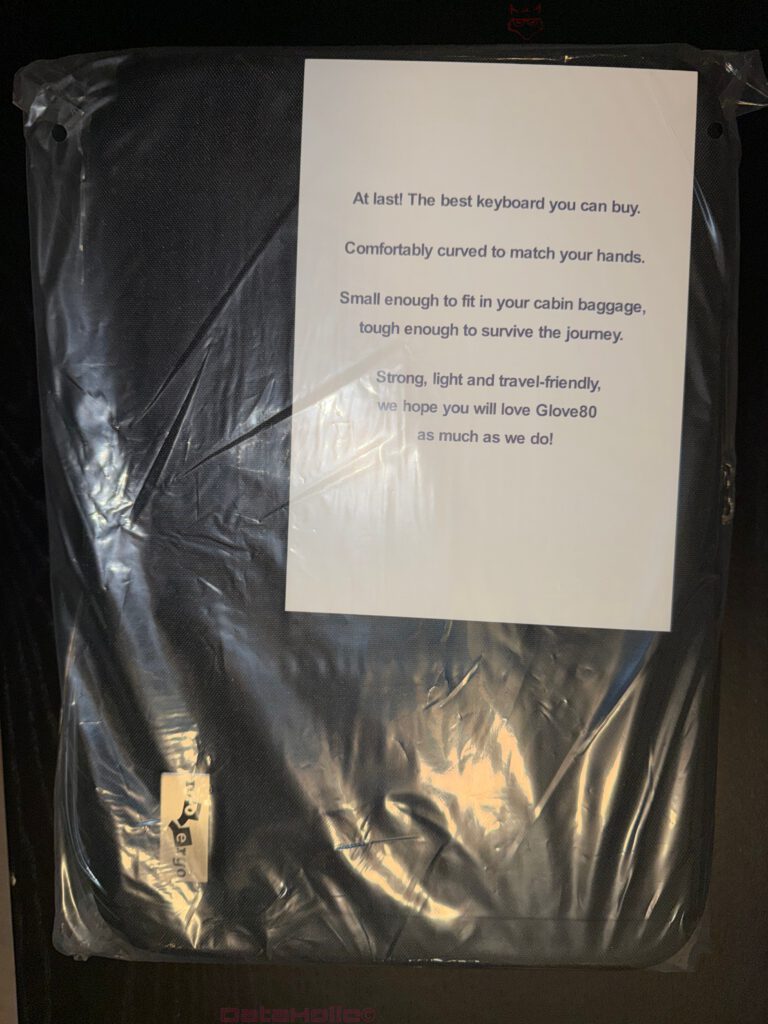
The Travel Case: a flight case in laptop format
The exterior is made from a firm yet slightly flexible EVA shell covered by tightly woven fabric. Under pressure, the material yields just enough to absorb impact while distributing force across a wider area. Exactly how a case must behave if it’s meant to protect not only from shocks, but also from point loads – like when someone carelessly tosses their hand luggage on top of yours on a flight.
The texture is dry, grippy, and appears water-repellent. Fingerprints and dust hardly show, which matters when you frequently slide the case in and out of backpacks. In one corner sits a small metal badge with the moErgo logo – understated, but high quality.
The zipper runs along the entire perimeter and is double-ended. The pulls glide smoothly, without snags, and they’re large enough to grip comfortably even after a long workday. A flat handle sits on the narrow side. It’s sewn tightly to avoid protruding edges that could catch on backpack compartments – one of those details you only notice when it’s missing.
Size-wise, the case is roughly comparable to a 13-inch laptop bag, but noticeably thicker. On a desk, it feels more like a compact instrumentation case. It’s immediately clear: this keyboard is meant as a serious work tool that needs proper protection.
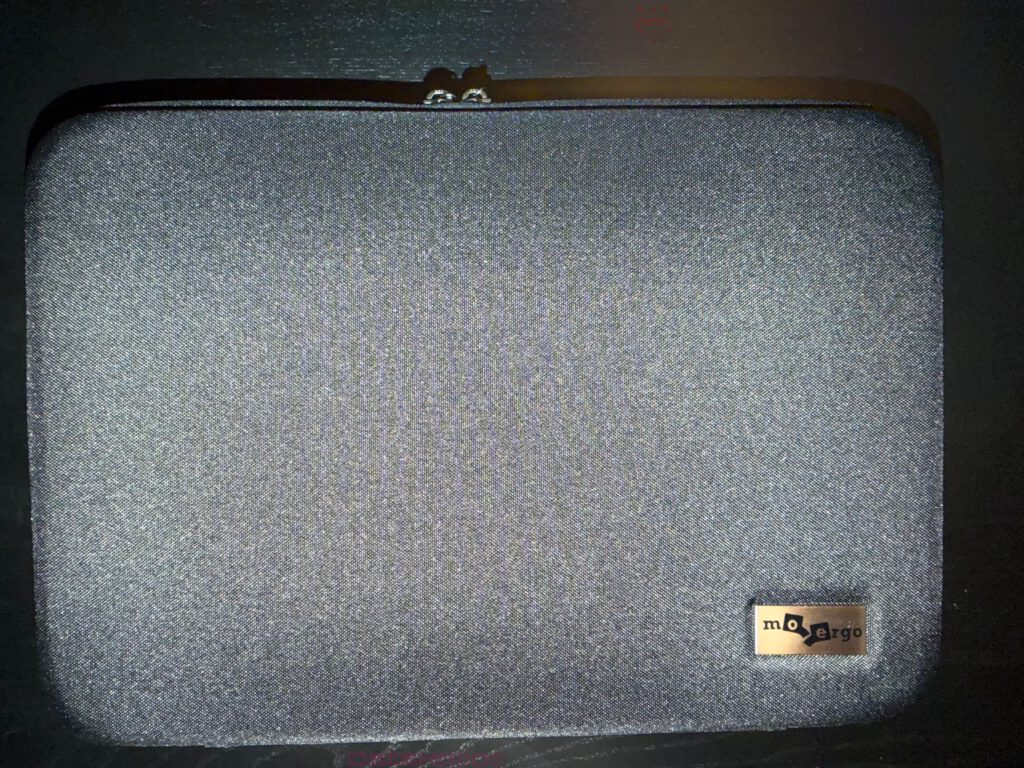
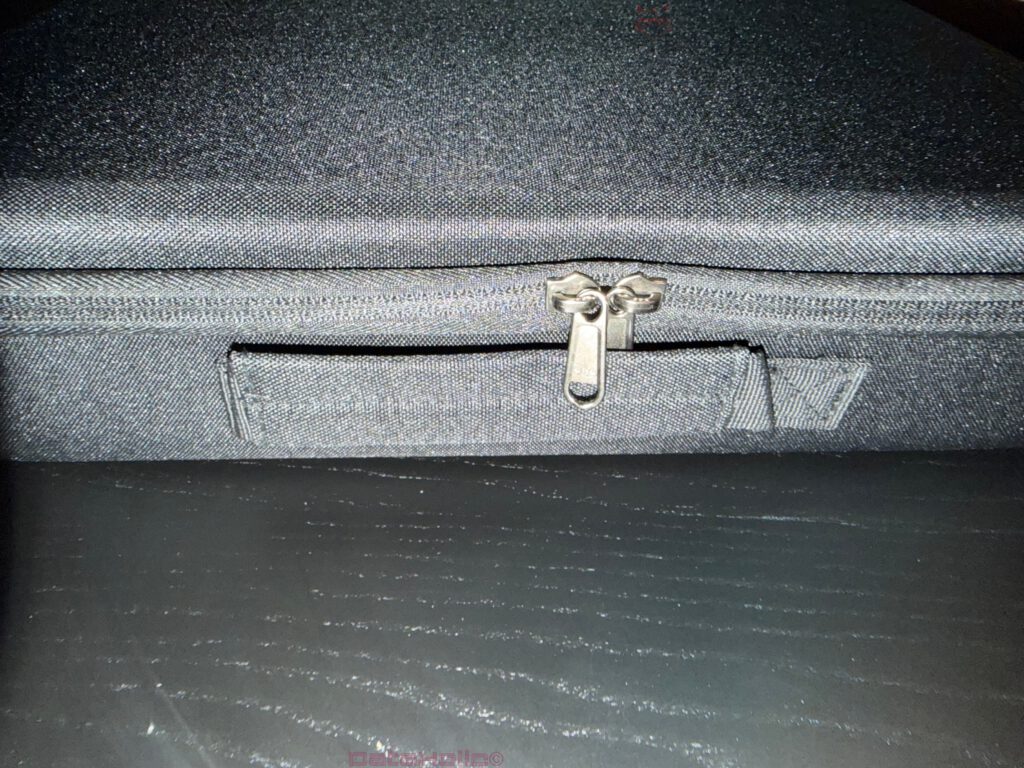
Interior architecture: when foam becomes a docking station
Opening the case reveals a precisely cut high-density foam block on the right side. Every contour of the two halves, the palm rests, and additional accessory slots is carved with accuracy. Nothing looks “roughly carved”; everything feels engineered. On the left, a thick egg-crate foam layer presses down gently when the case closes, securing the tops of the halves and the keycaps.
The main cutouts hold the Glove80’s concave key wells with virtually no play. When lifting the halves, you notice how tightly the foam grips them. The foam is intentionally firm. Softer grades might feel cozier but would allow the keyboard to sink, potentially creating pressure marks in sensitive areas. With this foam, impact energy is dispersed across the entire block.
Between the two main recesses are circular cavities meant for additional modules in some configurations. In this unit, they primarily serve as buffer zones to keep the halves from touching, even if the case is flipped upside down.
At this point you can tell MoErgo’s claim of a “travel keyboard” isn’t a marketing flourish. For some companies, that means “it’s not too big.” Here it means: “We provide you with a full mobile infrastructure, including safe storage.”

First encounter with the halves: clearly different even from the outside
Removing the halves from the foam reveals instantly what separates the Glove80 from classical keyboards. The surfaces are organic, the keys sit not in straight rows but in concave wells with columnar staggering. Even powered off, the board radiates ergonomics.
Each half has three major zones. In front, generous palm rests, slightly inclined and long enough so the wrists lie flat without bending. Behind them, the main key well with four rows arranged at different depths. And inward, angled towards the thumbs, the six-key thumb cluster.
The wells follow hand anatomy. The rows for ring and little finger are deeper; those for index and middle finger are higher. Travel distances become shorter and more natural. Even during unboxing, you can see how much anthropometric research must have gone into this shape.
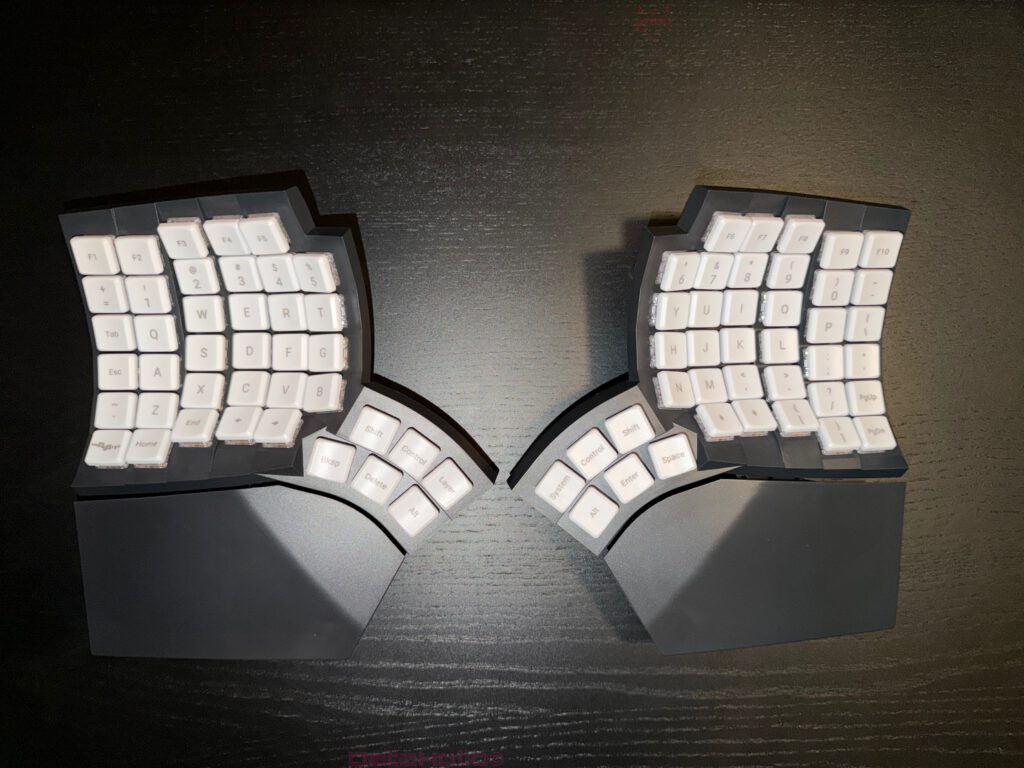
POM keycaps: material chosen with intent, not out of habit
For many keyboards, keycap material is almost an afterthought: ABS, PBT, anything will do. For the Glove80, it’s foundational. The caps are made of POM (polyoxymethylene) – a technical thermoplastic used in mechanical engineering when precision, low friction, and long-term dimensional stability are required.
POM offers several advantages that make it ideal here. The surface stays matte and shine-free for a very long time, even under heavy daily use. Moisture absorption is extremely low, which prevents warping in changing environments. And the material hardness provides a crisp, well-defined bottom-out without feeling brittle.
If you’re coming from ABS caps, you’ll notice the difference immediately. POM feels denser, more precise. The finger glides smoothly but doesn’t slip. PBT fans may notice the slightly smoother finish, but in the context of the Glove80, it makes sense: in concave wells, your fingers make shorter, more corrective movements, so a surface that isn’t too textured is actually beneficial.
MoErgo uses its proprietary MCC profile, designed specifically for Kailh Choc v1 switches. The caps are lower than MX-style caps, with gently concave tops that follow the curvature of the wells. Each row has its own height and angle, forming a “landscape” for your fingers that respects their natural positions instead of forcing them.
The legends are understated, sharp, and printed in a soft gray. The POM surface takes the printing cleanly without haloing, glossing, or edge artifacts. It’s obvious the material wasn’t chosen for convenience but because it fits this system of ergonomics, durability, and mechanical precision.
Silent Linear Plum Blossom: switches engineered for long-term comfort
Under the POM caps sit the Silent Linear Plum Blossom switches. At first glance, they resemble standard Kailh Choc v1 housings, but internally they are different. These switches are tuned for a far quieter and softer bottom-out without sacrificing linear precision.
The concept is simple, but the effect is striking: integrated silicone or polymer dampers cushion both the downstroke and the return. This eliminates the usual “click-clack” and suppresses high-frequency case resonance. The result is a controlled, neutral, muted “thock” that comes more from the keycap than from the switch.
Linear switches are sometimes controversial in the ergonomic world. Some swear by tactile bumps to avoid accidental presses. On the Glove80, the choice for Silent Linear makes perfect sense: because the wells already ensure extremely precise finger placement, the smooth, gentle travel avoids micro-strain caused by tactile peaks.
In quiet environments – offices, shared desks, late-night workspaces – the Plum Blossoms excel. They’re switches you almost forget while typing. And in ergonomics, that’s high praise.

The interplay: POM + Plum Blossom in concave wells
Only when combined does the design show its full depth. POM offers a firm, defined top surface. The Silent Linear switches soften the mechanical extremes. The concave wells ensure short, natural travel paths.
Anyone who types a lot knows the phenomenon: even if your posture is good, a scratchy or noisy board can wear you down. With the Glove80, the opposite is true. Even in an unconfigured, out-of-the-box state, it feels like a precision input device from a lab, not like consumer-grade mechanical peripheral gear. Every component seems tuned for long-term use – from materials to spring force.
To borrow and slightly twist an Arthur C. Clarke quote: “Any sufficiently advanced keyboard is indistinguishable from science.” The Glove80 sits exactly at that frontier.
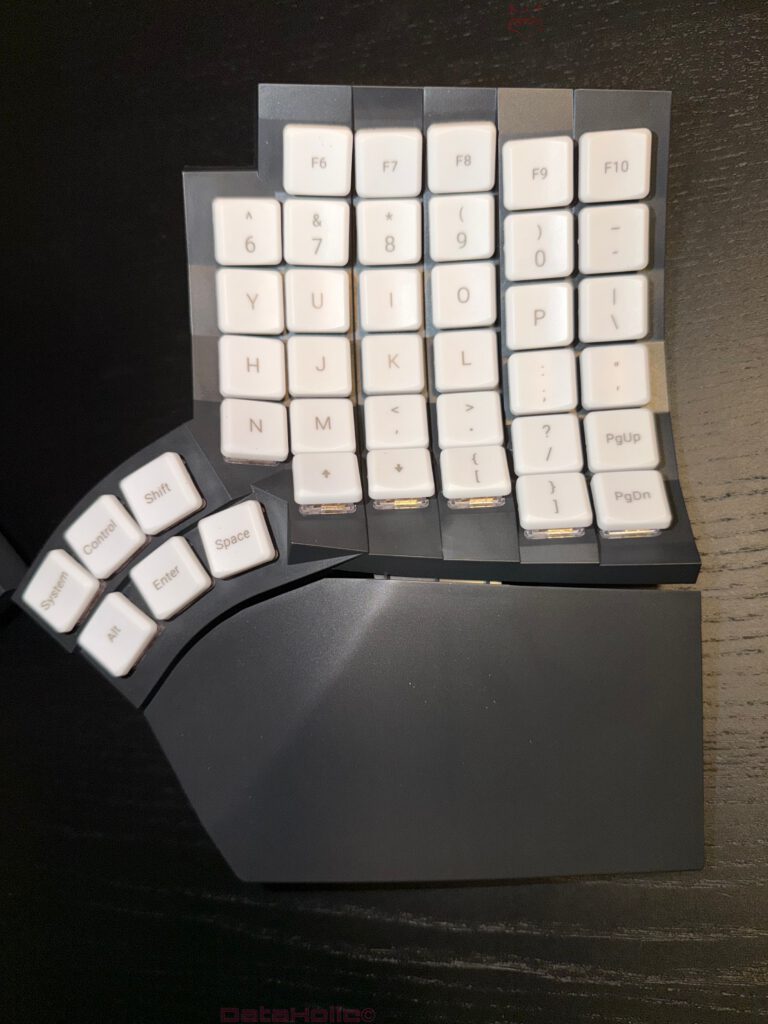

Underside and tenting: mechanical engineering, not simple feet
Flipping the halves reveals the second major distinctive element: the integrated tenting system. Several threaded inserts are built into the case to accept standoffs and feet in different configurations. This isn’t an attachment kit; it’s part of the core design.
In the default setup, the keyboard sits at a modest but noticeable angle. If you want more, you use the longer steel rods and additional hardware included in the kit. With them, quite extreme tenting angles are possible – turning the halves into something resembling miniature topographic structures. At high angles, your palms face each other more naturally, reducing pronation and relieving stress on tendons.
The feet are rubberized for stability, even at steep angles. O-rings sit between standoffs and case to act as vibration dampers. Anyone who has run a heavy board without damping on a hard desk knows how much mechanical resonance can travel into your wrists. This setup avoids that.
Additional threaded points allow for custom mounting solutions. Whether you want to mount the halves to chair arms, under-desk rails, or bespoke 3D-printed brackets – the system is ready. The Glove80 is less a keyboard and more a component in a larger ergonomic workstation.
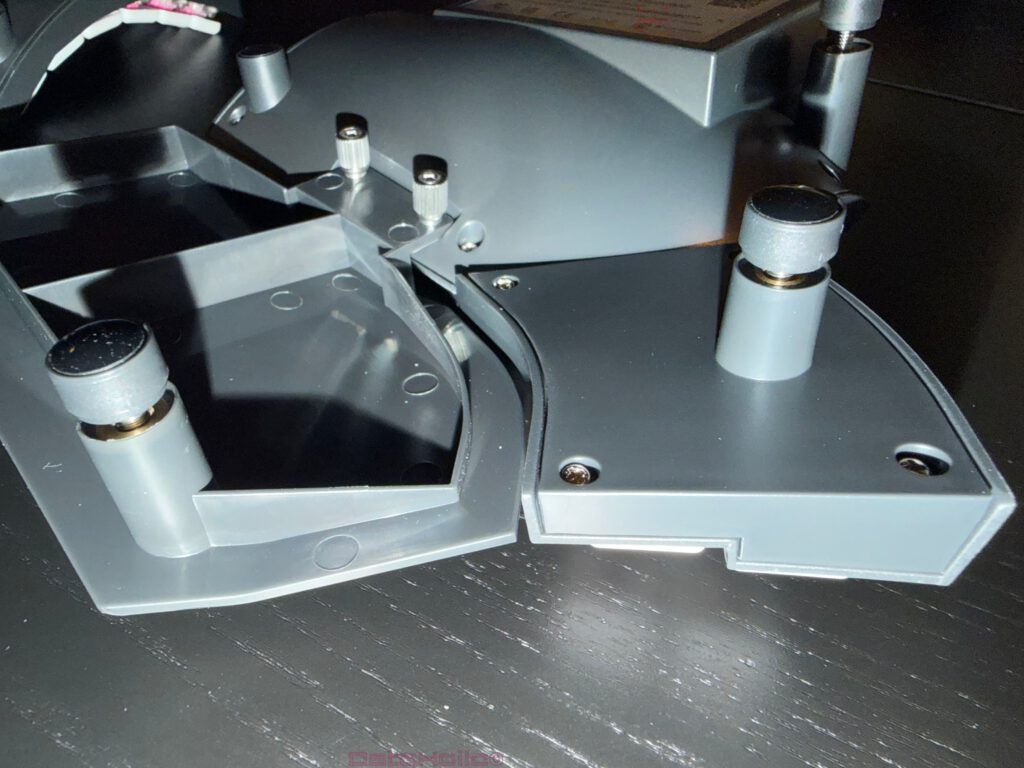
Electronics made visible: ports, indicators, case quality
At the back of each half sits a USB-C port, a status LED, and a small button. Even during unboxing, the build quality is reassuring. The USB-C port is embedded in a reinforced section of the shell. There’s no sense that an accidental cable tug might rip it off the PCB – something that’s absolutely a risk with cheaper boards.
The LED indicates battery charge, Bluetooth status, and layer states. The button handles pairing, bootloader access, and firmware actions. Again, MoErgo doesn’t hide these behind decorative trim. They’re exposed, accessible, and clearly placed.
The case halves themselves are well finished. The seams are tight, the color is uniform, and there are no rough injection mold artifacts. For a product not built in mass-market quantities, the manufacturing quality is impressive.
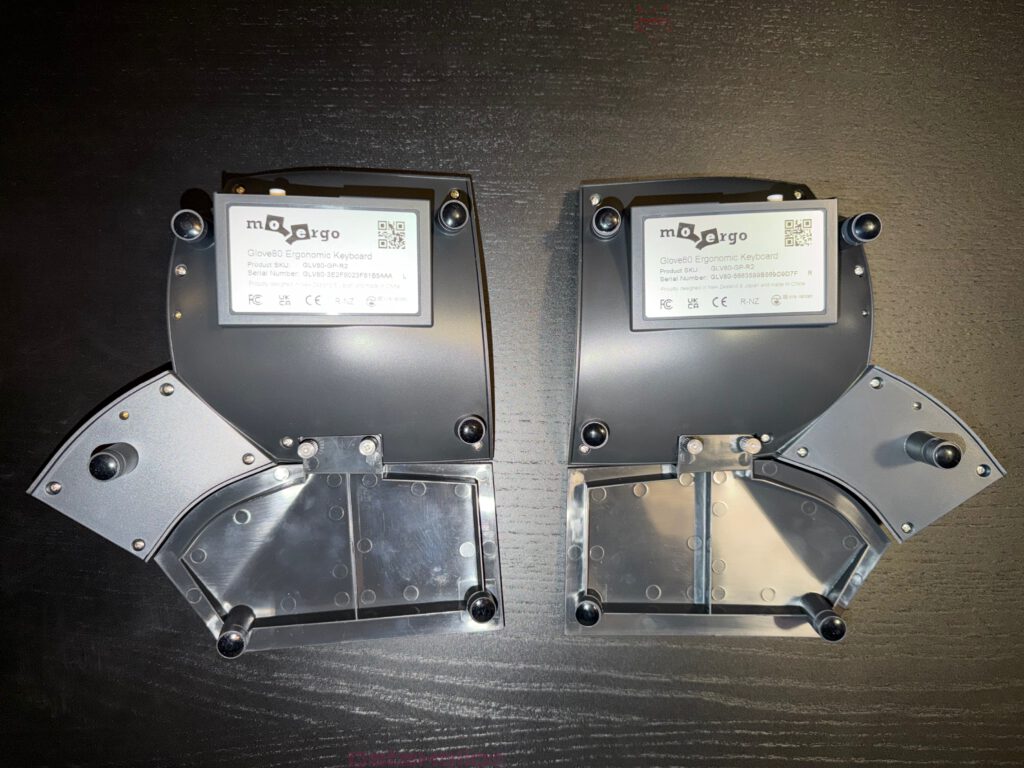
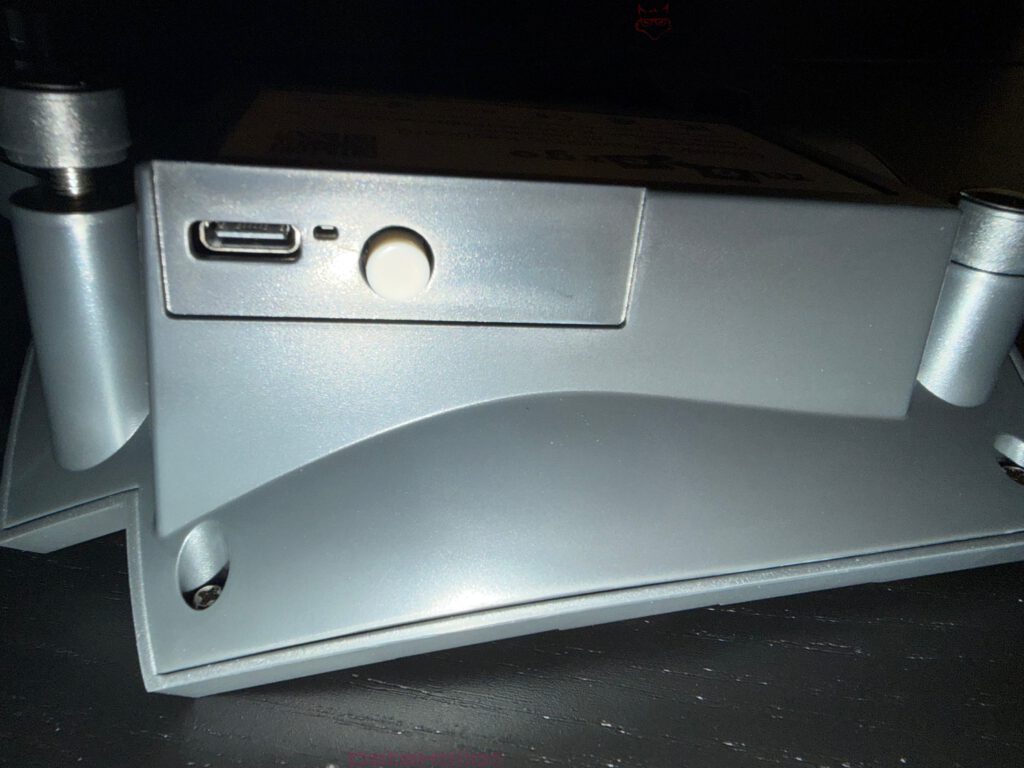
Accessories: a small ecosystem inside the case
Alongside the halves and their palm rests, several bags and pouches are neatly organized inside the travel case. This is where it becomes clear why many enthusiasts consider the Glove80 a platform rather than a product.
One bag contains multiple standoffs, rods, and nuts for alternative tenting setups. MoErgo expects users to experiment. Instead of a single fixed angle, you get a full hardware set to find the exact configuration your anatomy prefers.
Another bag contains extra keycaps – alternative legends and homing caps for crucial positions. In the ergonomic keyboard world, this is a big advantage. Keycap sets for Choc-profile wells are rare, so having options built in is extremely valuable.
Two small velvet pouches help keep screws and small parts organized when traveling. And of course, a sufficiently long, flexible USB-A-to-C cable rounds out the accessory kit.
It looks less like the accessories for a keyboard and more like the toolkit for a precision instrument. If you enjoy tuning, tweaking, and optimizing, you’ll feel right at home.
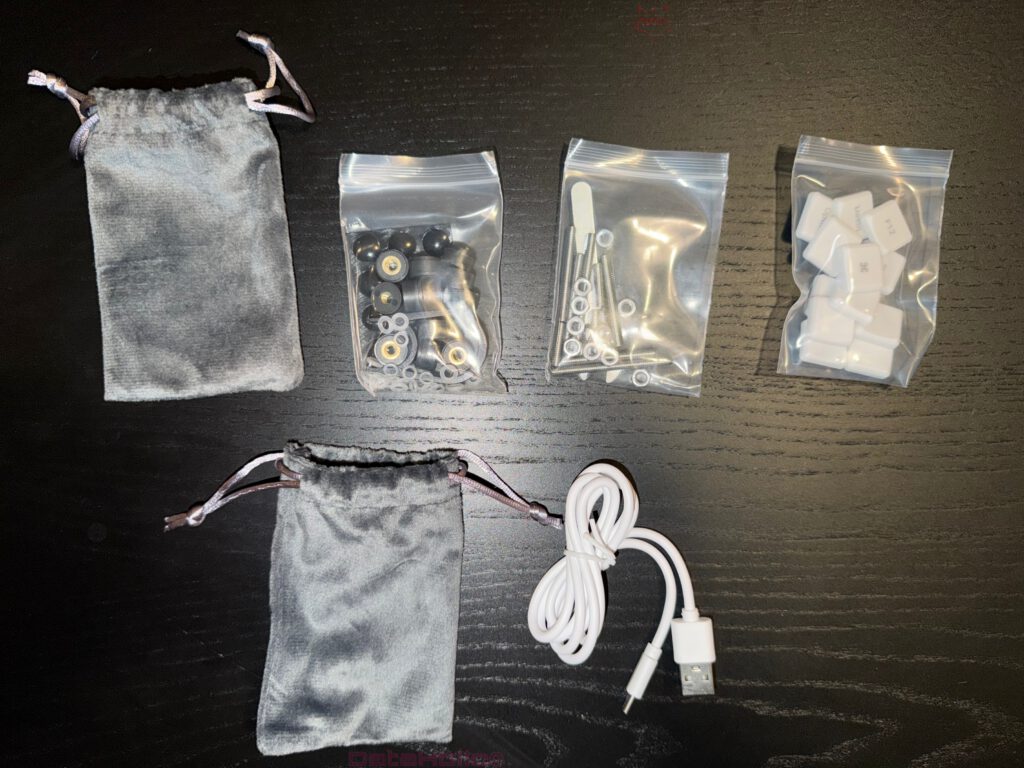
Software – a brief but essential excursion
Even though this is a pure unboxing, one point cannot be ignored: software. And here your note becomes crucial.
The Glove80 is configured entirely through the browser. There is no local application. No installers. No platform-specific utilities. You connect via a web UI that handles:
- key mapping
- layers
- macros
- RGB
- firmware flashing
The big advantage: total platform independence.
The key fact, though, is this: MoErgo’s official documentation is extremely detailed. Every function, every mode, every nuance of the firmware is explained in clearly structured sections, often with diagrams, screenshots, and real-world examples. For enthusiasts who like understanding their tools deeply, it’s near-perfect.
And that is exactly why there will be no standalone software article. Such an article would inevitably be a paraphrasing exercise without meaningful added value. The official documentation is living, updated as firmware evolves. A static article would be outdated quickly and less accurate than the source.
To put it plainly: Anyone technical enough to purchase a Glove80 will have no trouble understanding and using MoErgo’s documentation. The strongest and most honest move is to highlight that, rather than duplicating it.
An unboxing without a verdict – yet with a clear trajectory
A final judgment belongs in a separate review, not in an unboxing. But after opening the box, inspecting the case, encountering the POM keycaps, Silent Linear Plum Blossom switches, concave wells, and tenting hardware, one impression becomes inescapable: from the first moment, the Glove80 doesn’t feel like a gadget. It feels like a tool.
Dieter Rams once said: “Good design is as little design as possible.” That sentiment permeates the Glove80. There are no decorative lines, no unnecessary shapes. Everything you lift out of the case serves a purpose. The brown outer box, the case, the foam, the halves, the screws, the O-rings, the POM caps, the silent switches – each solves a concrete problem: transport, durability, ergonomics, acoustics, adjustability.
Before the first keystroke ever reaches a computer, you can already tell this board wasn’t made for casual users. It’s a tool created by enthusiasts for enthusiasts – with all that entails: a learning curve, configuration effort, and the promise of a workstation where hardware no longer gets in your way.
Transparency Note (EU Requirement)
“The MoErgo Glove80 Ergonomic Keyboard featured in this review was provided to us by MoErgo as a non-binding loan for testing purposes. This is not paid advertising.
MoErgo had no influence on the content, evaluation, or editorial independence of this article. All opinions expressed are based solely on our own practical experience.
We sincerely thank MoErgo for providing the keyboard and for their trust in dataholic.de.”
